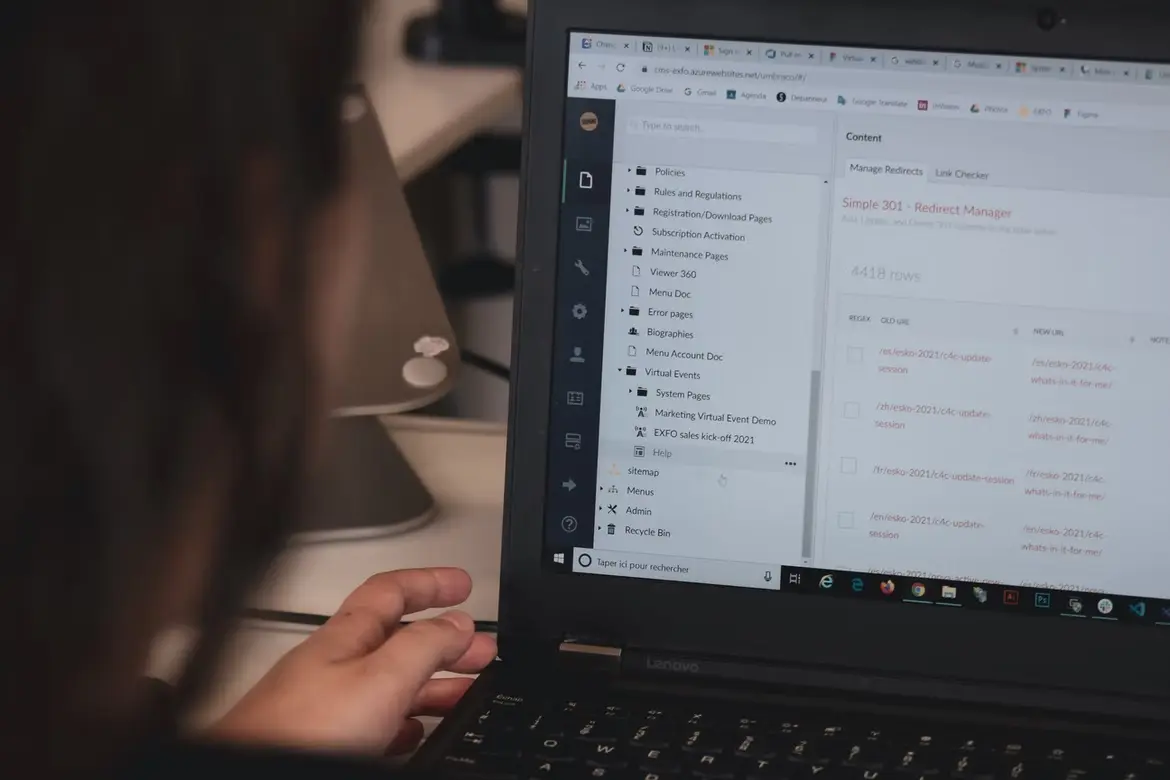How to Manage Remote Teams: The Complete Guide

Most managers prefer an in-office setting to manage their employees. This is because remote work became the new norm of working since the wake of the pandemic. And these managers that insist to go back to the office have been "counting bums on seats" for all their work life.
Managers having trouble managing their remote teams should first think twice about their management process. There's a huge gap between working remotely and working from the office. And a good manager should try acknowledging and acting upon the difference rather than trying to bridge the gap between the two work systems.
So, what's the big deal with remote teams?
The remote work setting has a number of advantages. This includes cutting down on workplace costs such as rent and office equipment, more productive employees as they can design their work schedule around their daily routine, a larger pool of talent, etc.
However, remote work also has its fair share of challenges. One of the biggest challenges is managing remote employees. This is because managers can't simply walk up to an employee and ask how their day is going. So, managers need to follow a definitive process to keep remote employees engaged and motivated.
Another challenge is communication. This is because remote employees are not always available during your work hours, which ultimately emphasizes the importance of asynchronous communication between your remote teams.
Another concerning challenge is that remote work can be quite isolating. This happens as remote employees often don't have the opportunity to interact with their colleagues on a daily basis. This is where you should be introducing fun activities to help them socialize.
In essence, you must never carry over the exact management process you followed in the office once you've shifted to remote work. There's a whole different process you should learn here and you must be willing to change your mindset and current managerial process to perfectly manage your remote teams.
Documentation is the Pillar to Better Manage Remote Teams

You must start by documenting everything that can be possibly documented. This not only helps you, but remote employees as well to better understand their tasks and expectations. Some of the best documentation tools include Notion and Loom.
One of the must-have documentation should be a remote team agreement. This is a document that establishes the core expectations, rules, and guidelines of your remote team. This helps to ensure that everyone is on the same page and knows what is expected of them. And documenting them will help employees refer to them in case they need to go over the agreement in the future.
In addition to this, you must always try to create documentation whenever possible. Especially in the case of unidirectional meetings, where only one party is talking and directing, it's better to avoid that meeting completely and create a document instead.
Documentation to help new remote employees

When a new employee is joining your remote team, chances are there will be a huge pile of information that they must consume. This may include company rules, policies, work processes, assignments, etc.
Most managers will have them hop on introductory meetings for their entire first week. Some managers might do it for a couple of weeks straight. Short introductory meetings once or twice a week in their first month are fine. You may utilize this time to add that "human touch", so the new remote employee won't feel isolated, and to share the important info.
Anything else should be documented. You can utilize tools like Notion for long-term documentation, such as company rules, policies, assignments, etc. And tools like Loom can be utilized to record training videos for your new employees that can take them through how they can complete a task.
All of this makes it easier to onboard new employees. This way, they have one central place where they can find all relevant information about processes, technology, etc.
Documentation to create redundancies

Meetings that are scheduled often create a lot of pressure on remote employees. A meeting might be scheduled when a remote team member is unavailable or they might be busy with something else. This creates a lot of unnecessary tension in them as they struggle to find time for the meeting.
Sometimes, a team member might even fail to make their appearance in the remote meeting. This is when documentation of the meetings saves you and your remote team.
So, in case someone in your remote team fails to make their appearance in an important decision-making session, they can simply refer to the documents produced during the meetings they missed, helping them easily get into the loop.
Documentation to pass on knowledge

Every remote team will have key players. These are the employees that show an exceptional level of dedication, coming up with ideas and solutions themselves that can help a business or other team members thrive and progress.
The influence of such employees on a company is huge. If they leave your team, it can impact and damage the entire operations a lot.
This is why managers should take the initiative to provide them an opportunity to share and document their ideas and knowledge. This way, even if they leave the company, other employees can pick up work and processes with what the key employers documented and left behind for the business to thrive.
Benefits of Documentation in Remote Teams
- Less remote meetings: You can reduce the number of remote meetings by creating documents instead.
- Better clarity: Documentation provides better clarity on tasks and expectations.
- Faster onboarding: New remote employees can be quickly onboarded with the help of documentation.
- Easier reference: Documentation can be easily referred to in case there are any doubts or confusion without having to rely on other colleagues or the manager.
Communication is Key to Flawless Remote Employee Management

Another important aspect of remote team management is communication. A remote team will have employees from different time zones. You'll have people spread across the world, and their working hours will be different from each other.
In order to make communication work effectively in remote teams, you must introduce and promote asynchronous communication.
Asynchronous communication is where the sender and receiver are not present at the same time. The sender can send a message, and the receiver can consume it at their convenience.
Async communication should be applied to the entire functioning of your company. Whether it's assigning new tasks or making important decisions, never expect an immediate response from your remote employees and encourage them to reflect on the changes at their convenience.
For remote teams, this is the ideal way to function as it helps people of all time zones.
Benefits of Asynchronous Communication in Remote Teams
- Increased Productivity: Asynchronous communication leads to increased productivity as remote employees are not interrupted in the middle of their work.
- Flexible Working Hours: Employees can work at a time that suits them the best, and they are not bound by traditional working hours.
- Reduced Stress Levels: Since there is no pressure to reply immediately, remote employees can take their time to craft a well-thought-out response. This leads to reduced stress levels.
Sharing Feedback the Right Way Boosts Progress

The remote work environment can be quite challenging for some employees. They might feel isolated or left out, and this is where managers play a key role in their development and growth.
Managers should provide remote employees with regular feedback about their performance on different projects. The feedback should be given in a way that is respectful and helps the remote employee understand what they're doing right and where they need to improve.
Giving remote employees feedback is essential to help them understand their strengths and weaknesses. It also lets them know that their work is being noticed and that they are appreciated.
It's important to note that feedback doesn't solely mean appreciating good work. Just as you should put importance on appreciating your remote employees, you must also help them become better at what they do with constructive criticism.
Criticisms must be honest, but make sure you don't make it toxic!
Benefits of Constructive Criticism in Remote Work
- Helps remote employees understand their mistakes: Without feedback, remote employees might not even realize they're making a mistake.
- Encourages remote employees to improve: Criticism encourages remote employees to work on their weaknesses and become better at their job.
- Builds trust between managers and remote employees: When remote employees feel their work is being noticed and that their opinion matters, it builds trust between them and their managers.
Meetings can Make or Break Your Remote Teams

Meetings are necessary to hold employees together. However, scheduling meetings often can break the functioning of remote teams. It can become a burden to your employees, dumping a lot of unnecessary tension over them.
Remote employees often complain about the high number of meetings. This mimics the office dynamics, where you'd simply sit by a colleague to ask for something. Although very convenient and immediate for you, you are simply disrupting your colleague's focus, and wasting their valuable time in context switching.
It's better to not have a meeting just to share information. As we already mentioned, if the meeting is going to be unidirectional, you may do that via a simple message. If it's a major decision for long-term functioning, it is better to document that in a central hub like Notion.
This way, your remote employees can consume the information when they have time, and they can also provide feedback or input whenever they want.
Most meetings could be a documentation piece and an async feedback loop, with;
- A few questions or input requirements
- Clear assignees for each input requirement
- Clear deadline for that input
Benefits of Reduced Meetings in Remote Teams
- More respectful of remote employees' time: Meetings can be disruptive, and remote employees often have a hard time context-switching. By reducing the number of meetings, you are being more respectful of their time.
- Encourages asynchronous communication: When there are fewer meetings, remote employees are encouraged to communicate asynchronously. This is beneficial because it allows them to communicate on their own time and at their own pace.
- Leads to more productive meetings: When there are fewer meetings, the ones that do happen are usually more focused and productive. This is because there is more time to prepare for the meeting and more time to actually get work done during the meeting.
Conclusion
Documentation works like magic in remote employee management. On the other hand, a high number of meetings will drag down the pace of progress of remote teams. So, it's important to resort yourself as a manager to creating clear documentation rather than having a meeting everytime.
Likewise, promoting asynchronous communication among remote teams is another way of ensuring you give them the freedom be as productive as possible. Async communication eliminates the need to respond or reflect on announcements immediately, helping remote employees avoid unnecessary tension and go about doing the work they've been doing during their work hours.
Managing remote teams can be difficult, but it's not impossible. With the right tools and communication strategies, you can make sure that your remote team is productive and happy. The key is to give them the freedom they need to work remotely.
Follow us for more knowledge about remote work
We'll be publishing new articles every week, and new social media content every day. If you enjoyed this article, follow us on Twitter or Linkedin, and stay in the loop. Share our content and drop us a comment there. Let's help more people learn about remote work.


